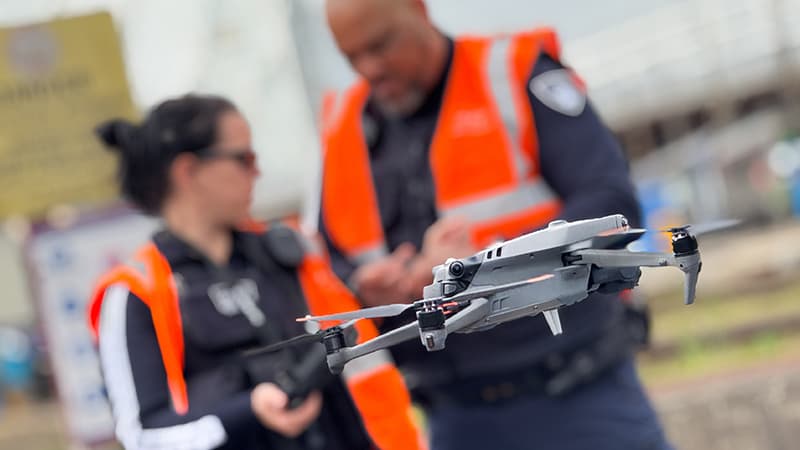It is a new threat that worries at the highest point. Drones intrusions in the aerial areas of several NATO countries in recent days, attributed to Russia, show how this type of machine can easily endanger infrastructure.
The SNCF, vital and critical network could represent a goal for malicious drones. It is a risk that the railway company takes seriously.
The operator identifies two risks: drones piloted by foreign military individuals and drones.
In the first case, the company emphasizes that they are “increasingly used by fans near trains in circulation, tourists around the stations, even by criminal networks in search of isolated objects that can be stolen near Technicentres.”
Reports made by travelers
“With the increase in the number of drones, we must be particularly attentive to detect unauthorized devices. When a suspicious drone is seen, we immediately evaluate the threat, we alert the equipment in the field and, if necessary, we are linked to the competent authorities to neutralize the risk,” explains Magali Di Crescenzo, national drones and anti-DR. Within the SNCF group.
“Railway security has been developed in 2021 a new competition in terms of drone detection. In case of an overview of a CNF retention, group employees are invited to contact the Service National Command Post. Witness travelers can also contact the alert number (3117) or send SMS to 31777. Risk of equipment or people,” added the group.
At the same time, in association with the Startup Drone Keeper, Rail Safety has designed an interactive card, identifying authorized drones missions and allowing the national post of the SAFE command to clearly distinguish in enemies or enemies.
Given military threats, if the detection is important, “rail security should continue its investments in the coming years, with new detection tools, such as radars, but also strengthening their training and information efforts,” he advocates SNCF.
A threat but also a tool
But for the moment, on the date, whether civil or military drones, the company cannot assume responsibility for neutralizing these machines alone. “Only the police are authorized to capture a drone in flight, through an electromagnetic rifle or a network,” continues Magali Di Crescenzo.
If drones are a clear threat to SNCF, they also represent a very effective tool to remotely monitor the network and equipment as part of the fight against the flight cable flights, increasingly numerous, or sabotage acts.
The railway security of the SNCF group has had a fleet of about thirty DJI Mavic drones and 45 agents formed specifically since 2015.
“Drones allow us to monitor the state of real -time infrastructure, quickly detect anomalies or intrusions and intervene effectively if necessary. They are particularly useful to access the difficult areas to access without interrupting rail traffic. Thanks to these drones, the inspection time of certain infrastructure has reduced 30%of 30%, which allows the equipment to focus on more complex interventions and strategic, “explain a remote pilot of a remote scratch.”
In airports, a real threat, limited means
The drones of unknown origin flew over civil and military airports in Denmark, but also in Norway and London. To neutralize them, interference remains the most common solution, through Jammer rifles transported on the shoulder, even if there are other small techniques used such as laser.
In France, “the detection and neutralization of light drones has been subject to specific measures since its appearance (Jamming …) and is the responsibility of the DGAC (General Directorate of Civil Aviation) and the Gendarmerie of Air Transport. Except for the danger raised by the drone, which can be provided with explosive loads, it is not planned to knock down the flying machine over the inhabited areas to avoid any collateral damage.
Source: BFM TV


